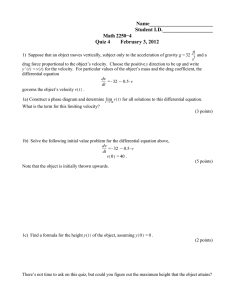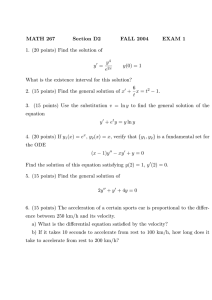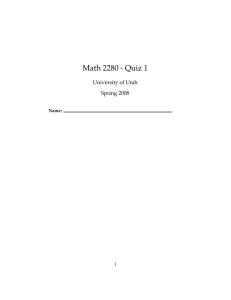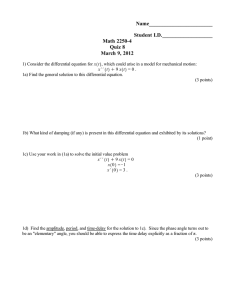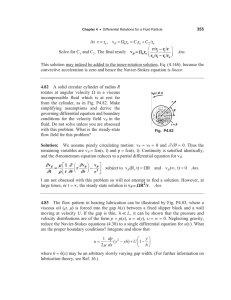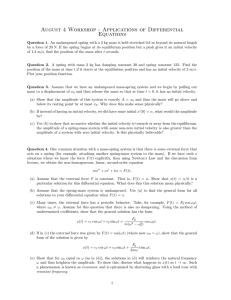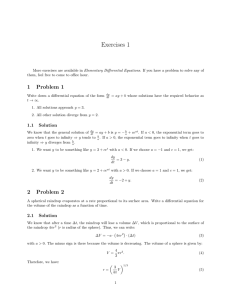MATH 2250 Differential Equations and Linear Algebra Homework 9 Computing Assignment
advertisement
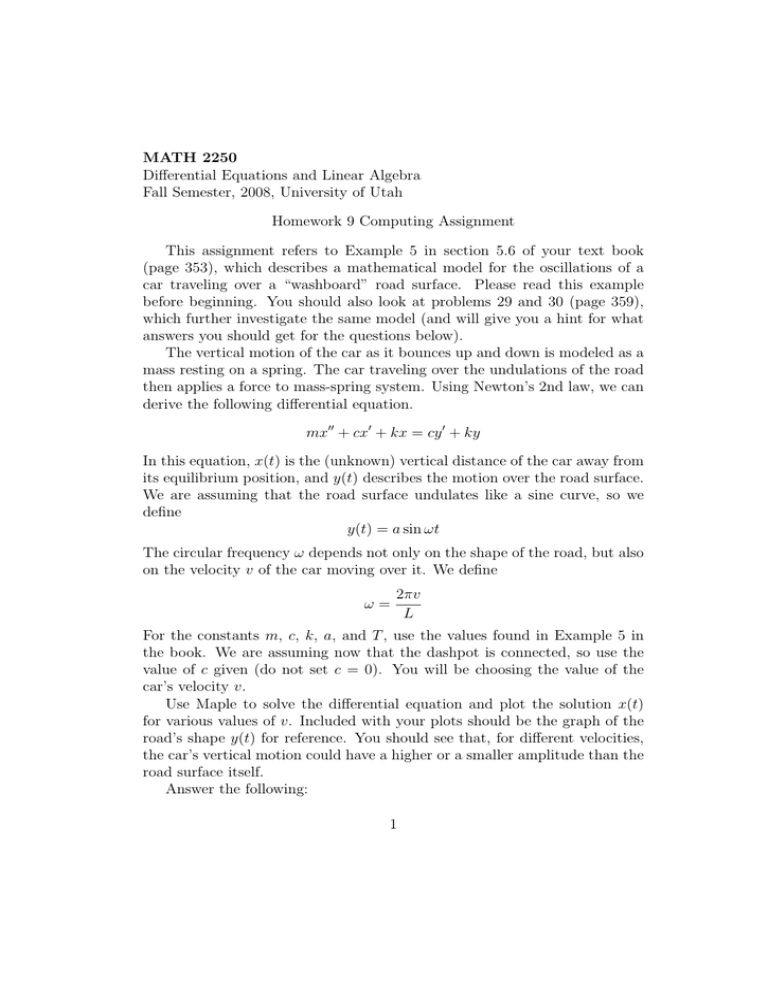
MATH 2250 Differential Equations and Linear Algebra Fall Semester, 2008, University of Utah Homework 9 Computing Assignment This assignment refers to Example 5 in section 5.6 of your text book (page 353), which describes a mathematical model for the oscillations of a car traveling over a “washboard” road surface. Please read this example before beginning. You should also look at problems 29 and 30 (page 359), which further investigate the same model (and will give you a hint for what answers you should get for the questions below). The vertical motion of the car as it bounces up and down is modeled as a mass resting on a spring. The car traveling over the undulations of the road then applies a force to mass-spring system. Using Newton’s 2nd law, we can derive the following differential equation. mx00 + cx0 + kx = cy 0 + ky In this equation, x(t) is the (unknown) vertical distance of the car away from its equilibrium position, and y(t) describes the motion over the road surface. We are assuming that the road surface undulates like a sine curve, so we define y(t) = a sin ωt The circular frequency ω depends not only on the shape of the road, but also on the velocity v of the car moving over it. We define ω= 2πv L For the constants m, c, k, a, and T , use the values found in Example 5 in the book. We are assuming now that the dashpot is connected, so use the value of c given (do not set c = 0). You will be choosing the value of the car’s velocity v. Use Maple to solve the differential equation and plot the solution x(t) for various values of v. Included with your plots should be the graph of the road’s shape y(t) for reference. You should see that, for different velocities, the car’s vertical motion could have a higher or a smaller amplitude than the road surface itself. Answer the following: 1 1. Suppose that your car would be damaged if it bounces with an amplitude of more than 10 centimeters (0.1 meters). Find a velocity that would cause a damaging motion and display the graph. 2. What happens if you drive very slowly over this surface (e.g. 10 miles/hour or less)? Graph an example and describe what you see. 3. What happens if you drive very fast over this surface (highway speed)? Graph an example and describe what you see. I have provided much of the Maple code that you will need to do the above. It is posted on the class web site as HW9Guide.mws. You will have to fill in the missing parts of the code to make it work, and then choose different values of v to graph as described above. 2
